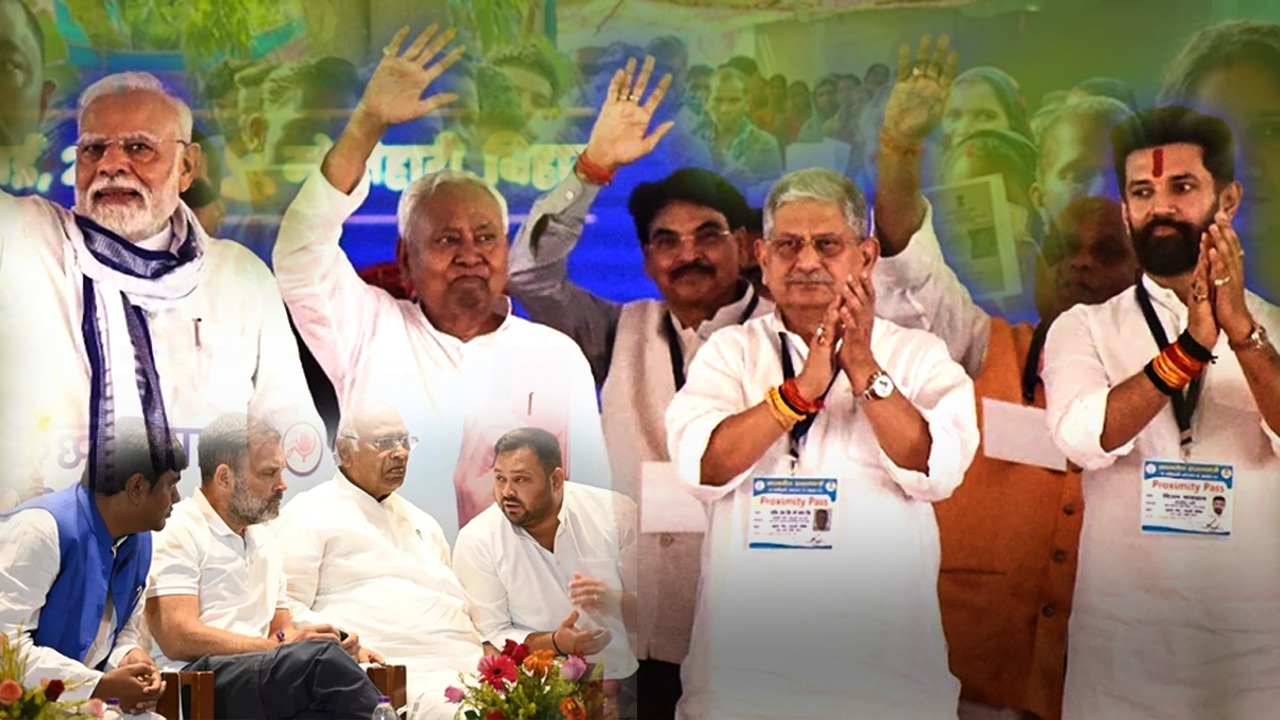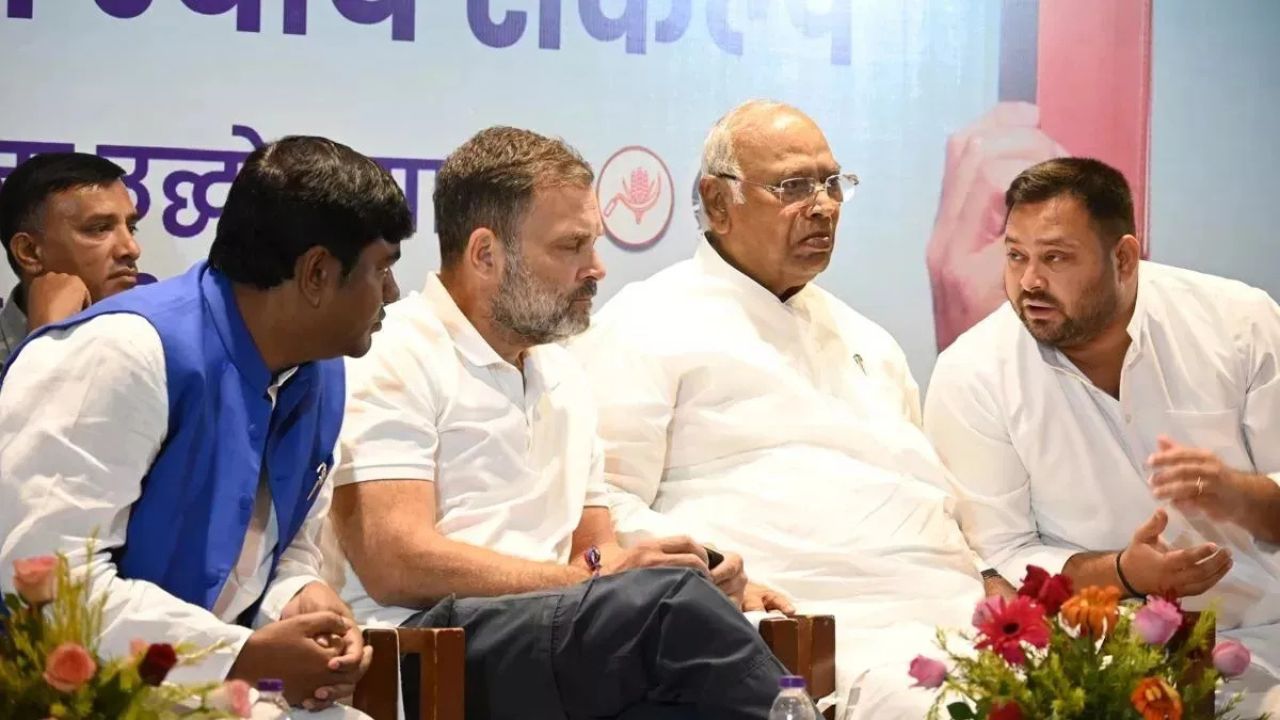 English
English

As Bihar gears up for the 2025 elections, the NDA appears ahead with a strategic seat edge. Yet cracks in the opposition and unexpected voter shifts could turn the tide. Who will emerge stronger in this high-stakes political battle?

Bihar polls scheduled for November 6 and 11.
Patna: As Bihar approaches its Legislative Assembly elections 2025, scheduled for November 6 and 11, the political landscape is marked by intense competition between the National Democratic Alliance (NDA) and the Mahagathbandhan (Grand Alliance). With 243 seats at stake, both alliances are vying for dominance in a state where caste dynamics and regional aspirations play pivotal roles.
The NDA has solidified its position by finalizing a seat-sharing agreement that reflects a balance of power between its major constituents. For the first time since 2005, the Bharatiya Janata Party (BJP) and Janata Dal (United) (JD(U)) will each contest 101 seats, signaling an equitable partnership.
Smaller allies, including the Lok Janshakti Party (Ram Vilas) with 29 seats, Hindustani Awam Morcha (Secular) and Rashtriya Lok Morcha with 6 seats each, complete the coalition's lineup.
Bihar Elections: JDU MLA Gopal Mandal stages protest outside CM house; Demands election ticket
This strategic distribution aims to consolidate support across various voter segments. Additionally, Prime Minister Narendra Modi is scheduled to engage with NDA workers in Bihar on October 15 under the 'Mera Booth Sabse Majboot' campaign, emphasizing grassroots mobilization
The Mahagathbandhan, led by the Rashtriya Janata Dal (RJD), faces internal challenges that could impact its electoral prospects. Disagreements over seat-sharing have surfaced, with leaders like Jitan Ram Manjhi and Upendra Kushwaha expressing dissatisfaction over their party's allocations within the NDA.

Disagreements over seat-sharing have surfaced in Mahagathbandhan.
These tensions may weaken the alliance's cohesion and voter confidence. Furthermore, the absence of a clear Chief Ministerial candidate has led to confusion among voters. While Tejashwi Yadav is a prominent figure, the lack of consensus on leadership could hinder the alliance's appeal.
The NDA currently holds an advantage in Bihar, with its key parties- the BJP and JD(U) controlling 114 seats classified as Very Strong or Strong. Since the majority mark in the state assembly is 122, this gives the NDA a clear edge.
However, looking at the 2024 general election results provides some caution. Nationally, the BJP lost 30% of its Very Strong and Strong seats. Before the elections, the party held 262 such seats, but it managed to win only 184, with the remaining 78 slipping to the Congress and other parties.
In addition, the BJP had 82 Battleground seats but managed to secure only 30, giving it a strike rate of just 37%, while the remaining 63% went to the Congress and other rivals. The Congress itself had a comparable performance: it won 67% of its Very Strong and Strong seats but only 22% of its Battleground seats.
Recent opinion polls indicate a tightly contested race. A survey by C Voter suggests the NDA holds a slight edge with a 40% chance of retaining power, closely followed by the Mahagathbandhan at 38.3%
Another poll by Livemint shows the NDA leading with 41.3% support, while the Mahagathbandhan trails at 39.7%
These figures underscore the significance of swing constituencies and the potential impact of undecided voters. The presence of new political entities like Prashant Kishor's Jan Suraaj Party, which aims to contest all 243 seats, could further influence the electoral outcome.
IRCTC Scam: Lalu and family to face court trial; Will this sink RJD in Bihar polls?
Bihar's 2025 elections present a complex political scenario where both the NDA and Mahagathbandhan have distinct advantages and challenges.
The NDA's strategic seat-sharing and grassroots engagement provide a solid foundation, while the Mahagathbandhan's internal issues and leadership ambiguities offer openings for the opposition. As the election dates approach, the evolving dynamics and voter sentiments will ultimately determine the state's political future.